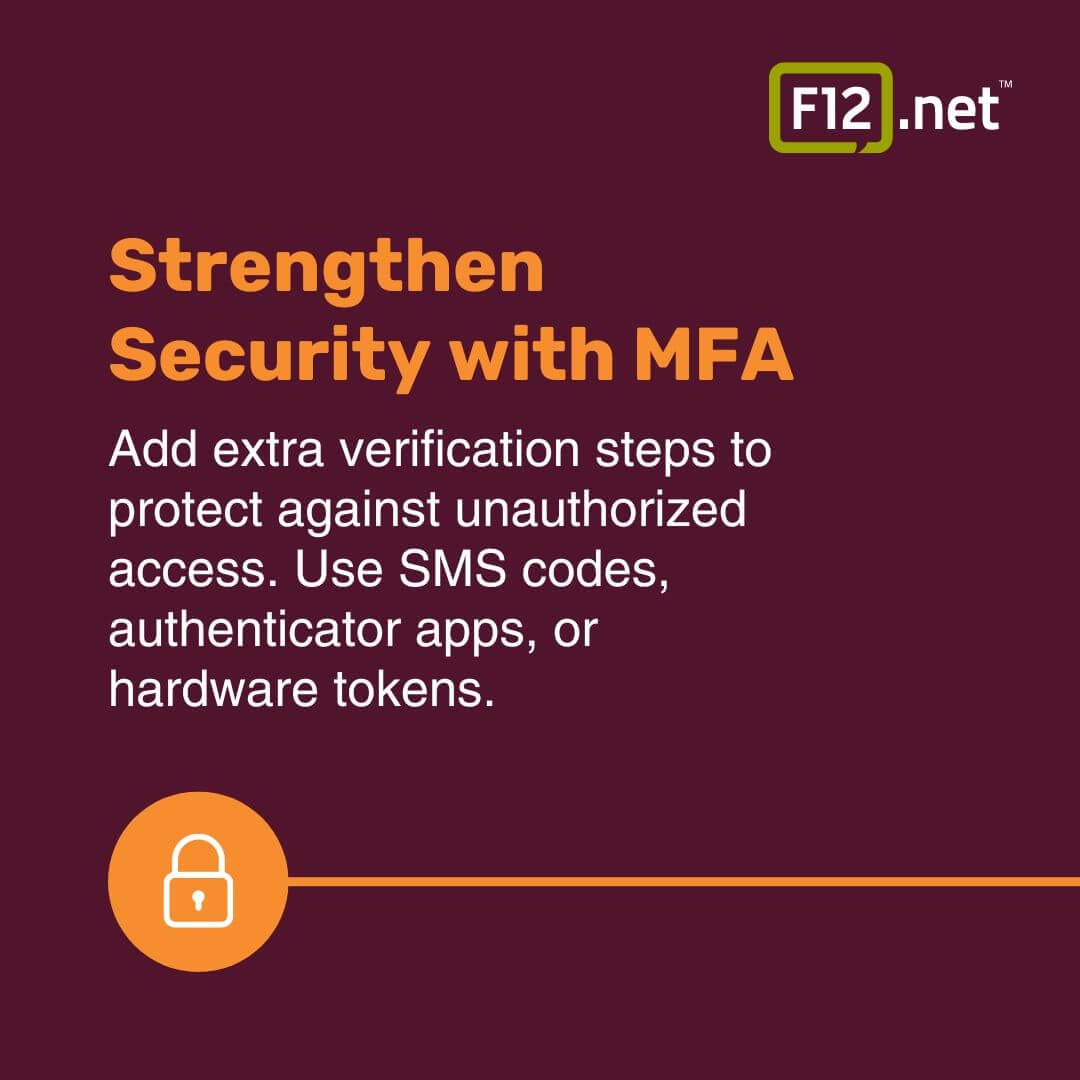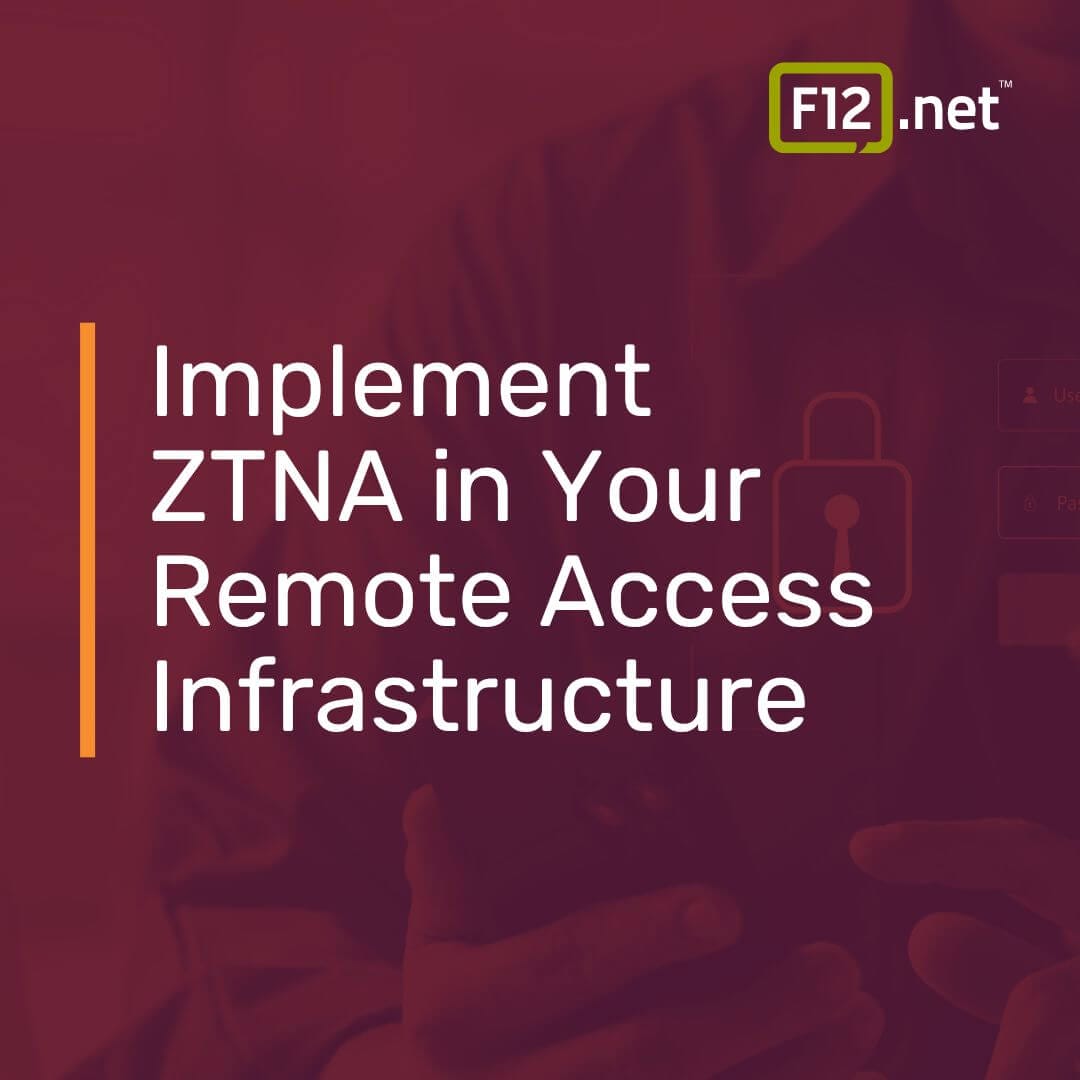Brief: This article provides a detailed look at secure remote access including advanced encryption protocols, robust multi-factor authentication methods, and cutting-edge technologies like Zero Trust Network Access.
The What, Why, and How to Securing Access to Your Business
“The Cylons will follow us again, as they have the last two hundred and thirty-seven times.”
— Doctor Gaius Baltar, Battlestar Galactica
With the rise of remote work and the increasing sophistication of cyber threats, providing secure remote access to your data and systems is a key piece of empowering employees while protecting your business from attacks.
But where do you start?
Much like the Cylons in Battlestar Galactica, who may not have been heard from in years yet remain a lurking, persistent threat, cyber adversaries often lie in wait, ready to exploit any vulnerabilities in your network.
They might seem silent, but with the implementation of crawlers and AI, automated threats are always there, whether you know about them or not.
The quiet periods, where no immediate threat is apparent, can lull you into a false sense of security, making your network and business even more susceptible to unexpected attacks.
With that in mind, we’ve created this step-by-step guide will walk you through the essentials of setting up secure remote access, from implementing encryption protocols and multifactor authentication to leveraging VPNs and exploring Zero Trust Network Access.
By the end of this article, you’ll have a clear understanding of the key components of secure remote access and the practical steps you can take to fortify your remote access infrastructure.
Let’s dive in and ensure your remote access is rock-solid and ready for the challenges of 2024 and beyond.
The Basics: Protecting Your Data with Encryption Protocols
- Encryption is essential for securing data during remote access
- SSL/TLS, IPsec, and SSH are common encryption protocols
- Using up-to-date encryption protocols ensures optimal security
Understanding Encryption Protocols
Encryption is the process of converting data into a coded format that can only be deciphered with the correct key. It plays a crucial role in securing data during remote access, preventing unauthorized access and protecting sensitive information from being intercepted by malicious actors.
Several encryption protocols are commonly used in remote access setups, including SSL/TLS, IPsec, and SSH. SSL/TLS (Secure Sockets Layer/Transport Layer Security) is widely used for secure web communication, encrypting data between a client and a server. IPsec (Internet Protocol Security) is a protocol suite that secures data at the network layer, providing confidentiality, integrity, and authentication. SSH (Secure Shell) is a network protocol that enables secure remote access to servers and devices, encrypting all data transmitted between the client and the server.
Using up-to-date encryption protocols is essential for maintaining optimal security. Older protocols may have known vulnerabilities that can be exploited by attackers. It’s important to stay informed about the latest developments in encryption standards and update your remote access setup accordingly.
Implementing Encryption in Your Remote Access Setup
Step 1: Enable Encryption for Remote Access Connections
To secure your remote access connections, you need to enable encryption on both the client and server sides. This typically involves configuring your remote access software or VPN client to use a specific encryption protocol, such as SSL/TLS or IPsec.
When configuring encryption, consider the following:
- Choose a strong encryption algorithm, such as AES (Advanced Encryption Standard) with a key size of at least 256 bits
- Use a trusted Certificate Authority (CA) to issue certificates for authentication
- Ensure that the encryption protocol is compatible with your remote access software and devices
Step 2: Configure Encryption Settings on the Client Side
On the client side, you need to configure your remote access software or VPN client to use the selected encryption protocol. This may involve:
- Installing and configuring the necessary software or browser extensions
- Importing any required certificates or keys
- Setting the encryption strength and other security parameters
Make sure to follow the documentation provided by your remote access software or VPN client for specific configuration steps.
Step 3: Configure Encryption Settings on the Server Side
On the server side, you need to configure your remote access server or VPN server to use the selected encryption protocol. This may involve:
- Installing and configuring the necessary server software
- Generating and installing SSL/TLS certificates
- Configuring the server to require encryption for all connections
- Setting the encryption strength and other security parameters
Again, refer to the documentation provided by your server software for specific configuration steps.
Step 4: Manage Encryption Keys and Certificates
Proper management of encryption keys and certificates is crucial for maintaining the security of your remote access setup. Best practices include:
- Storing keys and certificates securely, preferably on a hardware security module (HSM) or a secure key management system
- Regularly rotating keys and certificates to reduce the risk of compromise
- Using separate keys and certificates for different purposes (e.g., authentication, encryption)
- Implementing a key recovery mechanism in case of loss or damage
Step 5: Monitor and Update your Encryption Setup
Regularly monitoring and updating your encryption setup is essential for maintaining security over time. This involves:
- Keeping your remote access software and server software up to date with the latest security patches and updates
- Monitoring logs and alerts for any signs of unauthorized access or suspicious activity
- Periodically assessing your encryption setup for vulnerabilities and making necessary improvements
- Staying informed about new encryption standards and best practices
By implementing strong encryption protocols and following best practices for key management and monitoring, you can significantly enhance the security of your remote access setup and protect your data from unauthorized access.
Enhancing Security with Multi-Factor Authentication (MFA)
- MFA adds an extra layer of security to remote access by requiring users to provide additional verification beyond just a password
- Different MFA methods include SMS, authenticator apps, and hardware tokens
- Implementing MFA is a crucial step in securing remote access and protecting sensitive data
Multifactor authentication (MFA) is a security measure that requires users to provide two or more forms of identification to access a system or application. By adding an extra layer of security beyond just a password, MFA significantly reduces the risk of unauthorized access to your remote access environment.
Understanding the Benefits of MFA
MFA is essential for securing remote access because it addresses the inherent weaknesses of traditional single-factor authentication, which relies solely on passwords. Passwords can be easily compromised through various methods, such as phishing attacks, brute-force attacks, or social engineering. By requiring additional verification, MFA makes it much more difficult for attackers to gain unauthorized access, even if they manage to obtain a user’s password.
There are several common methods of implementing MFA:
- SMS: Users receive a one-time code via text message, which they must enter in addition to their password.
- Authenticator apps: Users generate a time-based one-time password (TOTP) using a mobile app, such as Google Authenticator or Microsoft Authenticator.
- Hardware tokens: Users carry a physical device that generates a unique code or requires a button press to authenticate.
While all these methods provide an extra layer of security, hardware tokens are generally considered the most secure, as they are not vulnerable to SIM swapping attacks or mobile malware.

Implementing MFA in Your Remote Access Environment
To implement MFA in your remote access environment, follow these steps:
- Choose an MFA solution that best fits your organization’s needs, considering factors such as ease of use, compatibility with existing systems, and the level of security required.
- Configure the MFA settings on your remote access server:
- Install the necessary software or plugins for your chosen MFA solution
- Set up user accounts and assign MFA devices or tokens to each user
- Configure policies for MFA enforcement, such as requiring MFA for all remote access attempts or only for specific user groups
- Configure MFA settings on the client-side:
- Instruct users to install the necessary apps or software on their devices (e.g., authenticator apps or token management software)
- Provide users with clear instructions on how to enroll their MFA devices and set up their accounts
- Ensure users understand how to use their MFA devices and what to do if they lose or misplace them
- Test the MFA implementation thoroughly:
- Verify that MFA prompts appear correctly during the remote access login process
- Test various scenarios, such as successful and failed authentication attempts, to ensure the system behaves as expected
- Address any issues or user concerns that arise during testing
- Establish best practices for managing MFA credentials and recovery options:
- Encourage users to keep their MFA devices secure and not share them with others
- Set up secure backup and recovery methods for MFA credentials, such as generating backup codes or using alternative authentication methods in case of device loss
- Regularly review and update MFA policies and procedures to ensure they remain effective and aligned with current security best practices.
Leveraging Virtual Private Networks (VPNs) for Secure Remote Access
- VPNs create encrypted tunnels for secure remote access
- VPNs are more secure than traditional remote access methods
- Different VPN protocols offer varying levels of security and performance
Understanding VPNs and Their Role in Secure Remote Access
Virtual Private Networks (VPNs) have become an essential tool for organizations looking to provide secure remote access to their employees. VPNs create an encrypted tunnel between the remote user’s device and the company’s network, ensuring that all data transmitted through this tunnel remains confidential and protected from potential threats.
Compared to other remote access methods, such as Remote Desktop Protocol (RDP) or virtual desktop infrastructure (VDI), VPNs offer a higher level of security. They encrypt all traffic between the remote user and the company network, making it much more difficult for attackers to intercept or manipulate sensitive data. Additionally, VPNs can be configured to restrict access to specific resources, further enhancing security by implementing the principle of least privilege.
Common VPN Protocols and Their Security Features
There are several VPN protocols available, each with its own set of security features and performance characteristics:
- OpenVPN: An open-source protocol that uses SSL/TLS for encryption, providing a high level of security and flexibility. It is widely supported across different platforms and devices.
- IKEv2 (Internet Key Exchange version 2): A fast and secure protocol that is particularly well-suited for mobile devices, as it can seamlessly switch between networks without dropping the VPN connection.
- WireGuard: A relatively new protocol that aims to simplify VPN configuration while maintaining a high level of security. It uses state-of-the-art cryptography and has a smaller codebase compared to other protocols, making it easier to audit and less prone to vulnerabilities.
Setting Up a VPN
Choosing the Right VPN Solution
When setting up a VPN for secure remote access, the first step is to choose a VPN solution that aligns with your organization’s security requirements and user needs. Consider factors such as:
- Supported VPN protocols
- Ease of deployment and management
- Compatibility with existing infrastructure and devices
- Scalability to accommodate future growth
- Integration with other security tools, such as multi-factor authentication (MFA)
Configuring the VPN Server and Clients
Once you have selected a VPN solution, the next step is to configure the VPN server and clients. This process typically involves:
- Installing and configuring the VPN server software on a dedicated server or virtual machine
- Generating and distributing client configuration files or certificates to remote users
- Configuring firewall rules to allow VPN traffic and restrict access to specific resources
- Testing the VPN connection to ensure proper functionality and performance
To optimize VPN performance and reliability, consider the following best practices:
- Use a reliable and high-bandwidth internet connection for the VPN server
- Implement quality of service (QoS) policies to prioritize VPN traffic over less critical traffic
- Monitor VPN usage and performance metrics to identify and address potential issues proactively
- Regularly update VPN server and client software to ensure protection against the latest security threats.
Addressing the Question: Is Remote Access More Secure Than VPN?
When comparing remote access methods, it is essential to understand that VPNs are a type of remote access solution that focuses on securing the connection between the remote user and the company network. Other remote access methods, such as RDP or VDI, primarily focus on providing access to specific applications or desktops, but may not inherently provide the same level of encryption and security as a VPN.
In general, a properly configured VPN is considered more secure than traditional remote access methods because it encrypts all traffic between the remote user and the company network, making it much harder for attackers to intercept or manipulate sensitive data. However, the overall security of a remote access solution also depends on factors such as:
- The strength of authentication mechanisms (e.g., using MFA)
- The security of the end-user devices (e.g., using endpoint protection software)
- The granularity of access controls (e.g., implementing least privilege principles)
Therefore, while VPNs are an essential component of secure remote access, they should be used in conjunction with other security measures to create a comprehensive and layered security strategy.
Exploring Zero Trust Network Access (ZTNA) for Enhanced Security
- ZTNA provides granular access control and reduces the attack surface
- Implements the principle of least privilege, granting access only when needed
- Offers a more secure alternative to traditional VPN solutions
Understanding the Zero Trust Security Model
The Zero Trust security model operates on the principle of “never trust, always verify.” This approach assumes that no user, device, or network should be trusted by default, regardless of whether they are inside or outside the organization’s perimeter. Instead, every access request is authenticated, authorized, and continuously validated before granting access to resources.
Compared to traditional perimeter-based security models, which rely on the concept of a trusted internal network and an untrusted external network, Zero Trust treats all networks as untrusted. This shift in mindset is crucial in the modern threat landscape, where perimeter defenses are no longer sufficient to prevent sophisticated attacks and insider threats.
By implementing ZTNA, organizations can significantly reduce their attack surface and mitigate security risks associated with remote access. ZTNA solutions provide granular access control, allowing administrators to define policies based on user identity, device health, and other contextual factors. This ensures that users only have access to the specific resources they need to perform their tasks, minimizing the potential impact of a compromised account or device.
Implementing ZTNA in Your Remote Access Infrastructure

Transitioning to a Zero Trust architecture requires careful planning and execution. Follow these steps to implement ZTNA in your remote access infrastructure:
Step 1: Assess Your Current Infrastructure
Begin by evaluating your existing remote access solution and identifying its limitations and security gaps. Determine which resources and applications need to be accessed remotely and assess the risk associated with each one. This assessment will help you prioritize the implementation of ZTNA and identify areas that require immediate attention.
Step 2: Define Access Policies and Segmentation
Create granular access policies based on the principle of least privilege. Determine which users and devices require access to specific resources and under what conditions. Segment your network based on resource sensitivity and user roles to minimize the potential impact of a breach.
Consider using tools like Okta, Duo, or Cisco Duo to manage user identities and enforce multi-factor authentication (MFA). MFA adds an extra layer of security by requiring users to provide additional proof of identity, such as a one-time password or biometric data, before granting access.
Step 3: Implement ZTNA Solutions
Select a ZTNA solution that aligns with your organization’s security requirements and integrates with your existing infrastructure. Some popular ZTNA solutions include:
- Zscaler Private Access (ZPA)
- Palo Alto Networks Prisma Access
- Cisco Secure Access by Duo
- Akamai Enterprise Application Access
- Perimeter 81
These solutions provide secure, encrypted tunnels between users and resources, ensuring that access is granted only after successful authentication and authorization. They also offer features like continuous monitoring, risk assessment, and adaptive access controls based on user behavior and device posture.
Step 4: Train Your Users
Educate your users on the importance of Zero Trust security and their role in maintaining a secure remote access environment. Provide training on best practices for password management, device security, and identifying phishing attempts. Regularly reinforce these concepts through ongoing awareness campaigns and simulated phishing exercises.
Step 5: Monitor and Audit ZTNA-based Remote Access
Continuously monitor your ZTNA implementation for suspicious activities and potential security breaches. Establish a centralized logging and monitoring system to detect anomalies and respond to incidents promptly. Regularly audit your access policies and user permissions to ensure they remain aligned with your organization’s security goals.
By implementing ZTNA in your remote access infrastructure, you can significantly enhance your organization’s security posture and protect against the evolving threat landscape. While the transition to Zero Trust may require effort and resources, the long-term benefits of improved security, granular access control, and reduced attack surface make it a worthwhile investment.
What is Secure Remote Access?
- Secure remote access is crucial for protecting sensitive data and systems
- It involves encryption, strong authentication, access controls, and monitoring
- Data Compliance with industry-specific security standards is essential
The Fundamentals of Remote Access
Remote access allows users to connect to and interact with a computer or network from a remote location. This trend in technology has become increasingly important in enabling remote work and collaboration, especially in the wake of the COVID-19 pandemic. Remote access can be achieved through various technologies, such as Remote Desktop Protocol (RDP), Virtual Network Computing (VNC), and Secure Shell (SSH).
However, while remote access offers numerous benefits, it also introduces security risks. Unsecured remote access can provide a gateway for unauthorized users to gain access to sensitive data and systems. This is why securing remote access is crucial for organizations of all sizes and industries.
The Risks of Unsecured Remote Access
Unsecured remote access can lead to:
- Data breaches and theft of sensitive information, with the global average cost of a data breach in 2023 being USD 4.45 million, a 15% increase over 3 years according to IBM.
- Unauthorized access to critical systems and applications, with Expert Insights stating 82% of breaches involving data stored in the cloud.
- Malware infections and ransomware attacks, with financially motivated incidents involving ransomware or extortion resulting in a median loss of $46,000 per breach.
- Compliance violations and legal liabilities, highlighting the importance of adhering to industry-specific security standards.

Key Components of Securing Remote Access
To mitigate the risks associated with remote access, organizations must implement a comprehensive security strategy that includes several key components:
Encryption of Data in Transit and at Rest
Encryption is the process of converting data into a code to prevent unauthorized access. When implementing secure remote access, it’s essential to encrypt data both in transit (as it travels over the network) and at rest (when it’s stored on devices or servers). This helps protect sensitive information from interception and theft.
Common encryption protocols for remote access include:
- Transport Layer Security (TLS) for web-based remote access
- Internet Protocol Security (IPsec) for VPN connections
- Secure Shell (SSH) for command-line access
Strong Authentication Methods
Authentication is the process of verifying the identity of a user before granting access to a system or application. To ensure secure remote access, organizations should implement strong authentication methods that go beyond simple usernames and passwords.
Multi-factor authentication (MFA) is a popular approach that requires users to provide two or more forms of identification, such as:
- Something they know (e.g., a password or PIN)
- Something they have (e.g., a security token or smartphone app)
- Something they are (e.g., a fingerprint or facial recognition)
Another option is to use digital certificates, which are electronic documents that verify the identity of a user or device. Certificates can be used in conjunction with MFA for an additional layer of security.
Access Controls and Permissions Management
Access controls and permissions management involve granting users the minimum level of access necessary to perform their job functions. This principle, known as “least privilege,” helps minimize the risk of unauthorized access and improve overall data security.
Some best practices for access controls and permissions management include:
- Implementing role-based access control (RBAC) to assign permissions based on job roles
- Regularly reviewing and updating user access privileges
- Promptly revoking access for terminated employees or contractors
- Implementing time-based access controls for temporary or seasonal workers
Monitoring and Logging of Remote Access Activities
Monitoring and logging remote access activities is essential for detecting and responding to security incidents. By tracking who accesses what resources and when, organizations can identify suspicious activity and take appropriate action.
Key elements of a remote access monitoring and logging strategy include:
- Centralized logging of all remote access attempts and sessions
- Real-time alerts for failed login attempts, unusual login locations, or other anomalies
- Regular review of log files to identify trends and potential security issues
- Retention of log data for a sufficient period to support incident investigations and compliance audits
Compliance and Regulatory Considerations
In addition to implementing technical security controls, organizations must also ensure compliance with relevant industry-specific security standards and regulations. These requirements often include specific provisions for securing remote access.
Overview of Industry-Specific Security Standards
Some common industry-specific security standards that address remote access include:
- HIPAA (Health Insurance Portability and Accountability Act) for healthcare organizations
- PCI-DSS (Payment Card Industry Data Security Standard) for companies that process credit card payments
- NIST (National Institute of Standards and Technology) SP 800-53 for U.S. federal agencies
Each of these standards has specific requirements for securing remote access, such as:
- Encrypting data in transit and at rest
- Implementing strong authentication methods
- Logging and monitoring remote access activities
- Regularly updating and patching remote access systems
Best Practices for Ensuring Compliance
To ensure compliance with industry-specific security standards, organizations should:
- Conduct a thorough risk assessment to identify potential vulnerabilities and threats related to remote access.
- Develop and implement remote access management policies and procedures that align with relevant security standards and regulations.
- Provide regular security awareness training to employees and contractors on the proper use of remote access systems and the importance of following security best practices.
- Perform periodic audits and assessments to validate the effectiveness of remote access controls and identify areas for improvement.
- Stay up-to-date with changes to security standards and regulations and adjust remote access policies and configurations accordingly.
By following these best practices and implementing the key components of secure remote access, organizations can protect sensitive data and systems while enabling remote work and collaboration.
Your Roadmap for 2024
You now have a comprehensive understanding of the key components and best practices for setting up secure remote access in 2024. Encryption protocols, multi-factor authentication, VPNs, and Zero Trust Network Access are all essential tools in your security arsenal.
As you move forward, prioritize the implementation of these security measures in your remote access infrastructure. Start by assessing your current setup and identifying areas for improvement. Then, create a step-by-step plan to address each component, ensuring that you adhere to industry-specific compliance requirements and regularly update your policies and configurations.
By taking a proactive approach to secure remote access, you’ll be well-positioned to protect your sensitive data and systems from potential threats.
Which of these security measures will you tackle first in your 2024 remote access roadmap?



